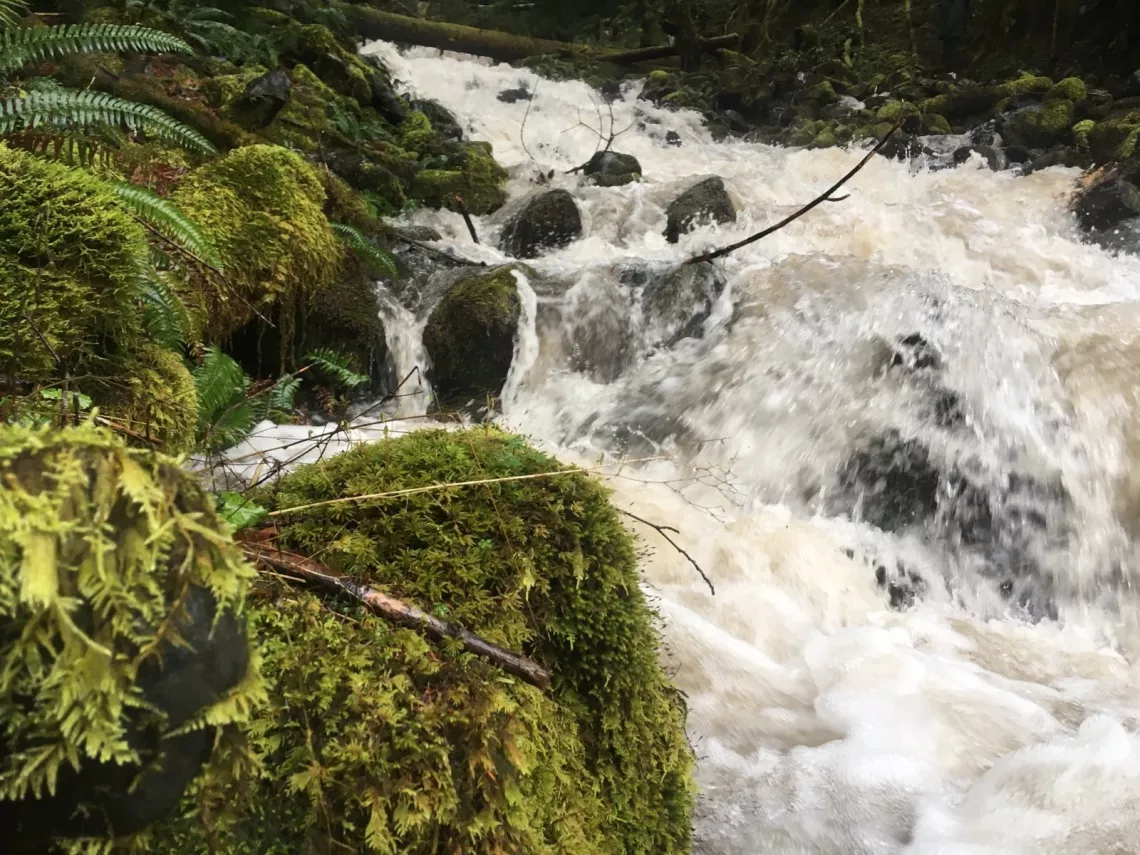
Photo credit: Selena Blick
Almost 3.5 million Oregonians rely on surface waters for some or all of their drinking water. Most of this water comes from forested lands which are often managed (under Oregon’s Forest Practices Act) for timber production. Some, like the Jetty Creek Watershed, have been largely clearcut, resulting in numerous violations of safe drinking water standards. Others, like Portland’s Bull Run Watershed, are protected and off limits to commercial logging, providing pristine water which needs minimal treatment.
Three primary factors are widely associated with diminished water quality in forested watersheds: limiting public access, prioritizing timber production, and letting local governments (instead of water districts) manage watershed resources. When communities close their forested lands behind locked gates, public oversight is eliminated. Recreational users are most often the ones who report watershed mismanagement. A case in point occurred in the Corvallis Watershed in March of last year. Decades of active forest management culminated in widespread public disapproval after a neighbor hiking in the forest noticed lots of old trees marked for cutting. Corvallis Public Works and their forestry consultant had justified cutting the older trees in the name of restoration. An in-depth investigation raised serious questions about the watershed management and sparked the formation of a local advocacy group, Friends of the Watershed.
The following are quotes from a letter a homeowner near the watershed wrote to the Corvallis Mayor: “The Corvallis Forest’s 2,352 acres, located within a watershed, is managed with a target goal of logging 900,000 board feet annually according to the 15-year Management Framework Plan. …. This plan allows the City to meet their target of harvesting 900,000 board feet of lumber a year from the Corvallis forest, thinning between 60- 80 acres per year (heavily in some areas).” … “Thinning at the level that is currently occurring in the Corvallis Forest greatly reduces the forest’s ability to store carbon and offset emissions for generations to come.”
Unfortunately, when timber production is prioritized in watersheds, it always comes at the cost of water quality. Logging practices and roads increase sedimentation, which increases treatment costs and leads to the formation of carcinogenic compounds (trihalomethanes) in the treated water. Even just thinning forests through logging dries them out, reducing their ability to capture and store water. This increases wildfire risk, while diminishing forest carbon and wildlife habitat.
The most efficient watersheds for providing drinking water are older, undisturbed forests. These forests have fully functioning ecosystems that naturally regulate water supplies and filter the water. Older forest ecosystems with their native plants, wildlife and deep organic soils also support human communities, by greatly reducing water treatment costs and keeping water flowing in the dry summer months. Plus, they store huge amounts of carbon and cool the air. All of the ecological benefits of natural forests also support the primary purpose of watersheds: providing an abundant source of clean drinking water.
The Oregon Chapter Forest Team has been actively advocating on behalf of the Corvallis Watershed. To get involved contact the Oregon Chapter Conservation Committee at conservationcommittee@oregon.sierraclub.org.